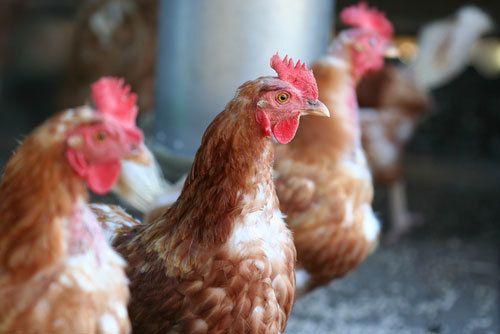One Source of Bird Flu Virus Found

Poultry markets in Shanghai are one likely place where people are contracting the new bird flu virus, a new study from China suggests.
In the study, researchers collected 970 samples from poultry markets and farms in Shanghai, and the Anhui Province in eastern China. The samples included drinking water and soil from the areas, as well as swabs from birds' throats.
Twenty samples tested positive for the H7N9 virus, all from poultry markets in Shanghai. Ten of the positive samples were from chickens, three from pigeons, and seven from the surrounding environment. The H7N9 viruses in the samples were very genetically similar to the viruses that have sickened people in China, suggesting that poultry markets are a source of infections, the researchers said.
So far, health officials know of 108 people who've fallen ill with the new strain of bird flu, 22 of whom have died, according to the World Health Organization. Right now, there are no reports of sustained human-to-human transmission.
The new study provides "evidence for what many people had assumed anyway," which is that people can contract bird flu at poultry markets, said Dr. Richard Webby, a bird flu expert and infectious disease researcher at St. Jude Children's Research Hospital who was not involved in the study. Previously, reports of infection with the H5N1 strain of bird flu were linked to poultry markets, Webby said.
However, the new study does not suggest that the new H7N9 bird flu virus originated in Shanghai poultry markets, or that the markets are the only source of infection, said Dr. Andy Pavia, chief of the University of Utah's Division of Pediatric Infectious Diseases, and chair of the influenza advisory committee at the Infectious Disease Society of America.
"It's not clear that markets are the source for the great majority [of infections] — we just don’t know," Pavia said.
Sign up for the Live Science daily newsletter now
Get the world’s most fascinating discoveries delivered straight to your inbox.
In fact, it has been reported that as many as 40 percent of people infected with H7N9 did not have a history of contact with poultry.
New flu viruses can arise when gene segments from different flu strains mix and match. The new study and others suggest that H7N9 had three genetic "parents" that combined to make the new virus, Pavia said. All three of the parent viruses are thought to have infected birds, he said.
Poultry markets may provide a sort of breeding ground for such reassortment to happen.
"It provides a rather unnatural environment where a lot of these different bird species, that may have different [flu] viruses, get together," and perhaps share viruses, Webby said.
Yanzhong Huang, director of the Center for Global Health Studies at Seton Hall University in South Orange, N.J., said that it's still not certain that the new virus originated in poultry. For instance, pigeons have also been found to be infected with the virus, Huang said.
To control the outbreak, Chinese health officials need a way to eliminate the infected bird population, and limit human exposure to the virus, Pavia said. (Currently, the virus does not appear to make birds ill.)
A diagnostic test for H7N9 would allow health officials to know where people are getting sick with the virus, Pavia said. Health officials will continue to remain vigilant and track the spread of the virus, he said.
In new study is published in the April issue of the journal Chinese Science Bulletin.
Pass it on: A poultry market Shanghai may be one source of H7N9 bird flu infections.
This story was provided by MyHealthNewsDaily, a sister site to LiveScience. Follow Rachael Rettner @RachaelRettner. Follow MyHealthNewsDaily @MyHealth_MHND, Facebook & Google+.

Rachael is a Live Science contributor, and was a former channel editor and senior writer for Live Science between 2010 and 2022. She has a master's degree in journalism from New York University's Science, Health and Environmental Reporting Program. She also holds a B.S. in molecular biology and an M.S. in biology from the University of California, San Diego. Her work has appeared in Scienceline, The Washington Post and Scientific American.












